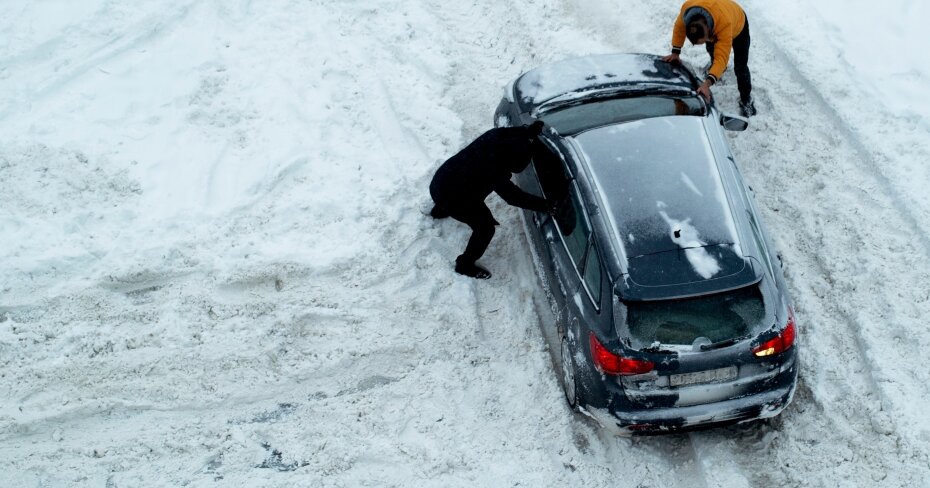What to know about winter driving and car insurance in Canada
By: Mark Gregorski on November 23, 2023
Winter driving in Canada can be stressful, tedious, and dangerous. Freezing temperatures, ice and snow come together to create hazardous road conditions, which increases the risk of collisions and other nasty surprises.
Take something as mundane as parking: You park your car on a curb — only to discover a snow plow has swiped it when you return. In these cases, where does your insurance figure in?
In this article, we’ll cover the pitfalls of driving and parking your car during winter and what related claims your insurance policy will cover.
What type of car insurance offers protection against winter driving risks?
Two types of car insurance can protect you against the risks that winter driving poses in Canada. The first is collision insurance, which compensates you for damage your vehicle suffers if it collides with another car or object. The second is comprehensive insurance, which covers repair bills and replacement costs for damage from non-crash incidents, especially those related to adverse weather.
Some insurance providers bundle collision and comprehensive coverage under a single product called all perils insurance.
Unlike liability insurance, collision and comprehensive insurance are optional in Canada, so never assume you're covered. Make sure you’re protected by reviewing your policy or contacting your insurance provider before winter sets in.
Winter driving hazards and the impact on your car insurance
Here are some issues you may encounter while operating a vehicle during winter and how they affect your car insurance.
Parking lot accidents
In the winter, even parking lots can become treacherous, given the slippery road conditions, deep snow, and poor visibility. All these factors increase your risk of collision.
If such an incident occurs, insurance companies use fault determination rules to assess who’s to blame for a collision, damage, or injury — even in a parking lot. Traffic laws also apply to parking lots as on city streets and highways: You must observe right-of-way rules, four-way stops and yield to pedestrians.
If you’re determined to be at-fault, your liability coverage would pay for the other driver's medical bills and vehicle repairs. However, your insurance premium will increase since you caused the accident. You’ll also be financially responsible for repairs to your own vehicle unless you have collision coverage.
Related: How do you determine who’s at fault in a car accident?
Falling tree branches
Picture this: a tree branch snaps under the crushing weight of snow and falls onto your windshield, severely denting your hood. Will your car insurance step in to cover the repair bill?
The answer is yes, provided your policy contains comprehensive coverage.
Still, you’ll be responsible for paying the deductible, so avoid parking directly under a tall tree (or a roof with large icicles), especially after a heavy snowfall.
Windshield cracks
Bitterly cold temperatures can stress existing chips and cracks in your windshield, causing them to spread. If the damage is severe enough, you may need to replace your windshield entirely, which can cost hundreds of dollars.
Comprehensive coverage should cover your bill. However, if the damage is less than your deductible or not significantly more, you may want to skip filing a claim and fix the damage out of pocket to avoid higher premiums down the road.
Getting stuck in a ditch or snow
A typical winter plight is losing control of your vehicle and ending up in a ditch or getting stuck in deep snow.
Unfortunately, neither collision nor comprehensive insurance will cover the cost of a tow. However, roadside assistance insurance can.
Roadside assistance insurance covers basic services like battery boosts, flat tire changes, winching and fuel delivery to get your car back on the road in case you're left stranded.
However, it’s rarely worth the increase in insurance premiums – instead, consider joining an automobile club like CAA or Canadian Tire’s Roadside Assistance Program, and double-check your car’s extended warranty, as it might already offer free tows.
Accidents on slippery roads
Some drivers believe their insurance company shouldn’t deem them at fault for accidents they cause on slippery roads (especially when black ice forms), arguing that they can’t brake in time to avoid striking another vehicle or object.
However, your insurance company requires you to exercise caution and adjust your driving to road conditions.
In the event of a collision, if your insurance provider deems you responsible, they'll cover your third-party liability bills. However, they'll also hike your premium.
In single-vehicle accident, you're still at fault if you skid on an icy road and hit a tree. But in this situation, collision insurance will cover your repair bills.
To reduce the chances of being involved in a collision, slow down and seriously consider equipping your vehicle with winter tires.
Snow plow swipes
Let’s say a snow plow strikes your parked vehicle, leaving huge scratches and a broken side mirror. Would your insurance provider cover the cost of repairs in this situation?
That depends on whether or not you can prove the snow plow operator was at fault. If you have compelling evidence that shows they swiped your vehicle, such as dashcam footage, your insurance provider will pay for the repair bills, and hold the city accountable for the damage. However, you’ll need to have collision coverage to receive a payout. You can also file a claim with the municipal government to recover your deductible.
You may also be found partially at fault for the incident — say, if you parked your car on a snow plow route.
Unfortunately, if you suspect that a snow plow hit your vehicle but have no proof, you could face hurdles in getting your insurance provider to honour your claim; the city may deny that they're responsible for the damage.
Potholes
During the winter, potholes can be covered in snow, making them harder to spot while you’re driving
Driving over a large pothole can cause severe damage to your rim, tire, hubcap, and suspension, resulting in a pricey repair bill. If you have collision coverage, your insurance provider can pick up the tab. Just be sure to weigh the cost of your deductible against paying for the repairs out of pocket.
You may also be entitled to compensation from your local municipality, as they have a duty to fix large potholes in a reasonable time frame, especially on busy roads.
Read more: Everything to know about your auto insurance deductible
Auto insurance can help – but it doesn’t do it all
When it comes to driving during the winter, collision and comprehensive auto insurance can keep you covered from all manner of bumps, swipes and skids on the road.
However, you will still be responsible for reading over your policy carefully to know what’s covered, installing winter tires and driving carefully — and if an incident does happen, you’ll still want to consider the cost of the deductible versus just repairing it yourself.
Save 20% on average on car insurance
Compare quotes from 50+ Canadian providers in 3 minutes.


